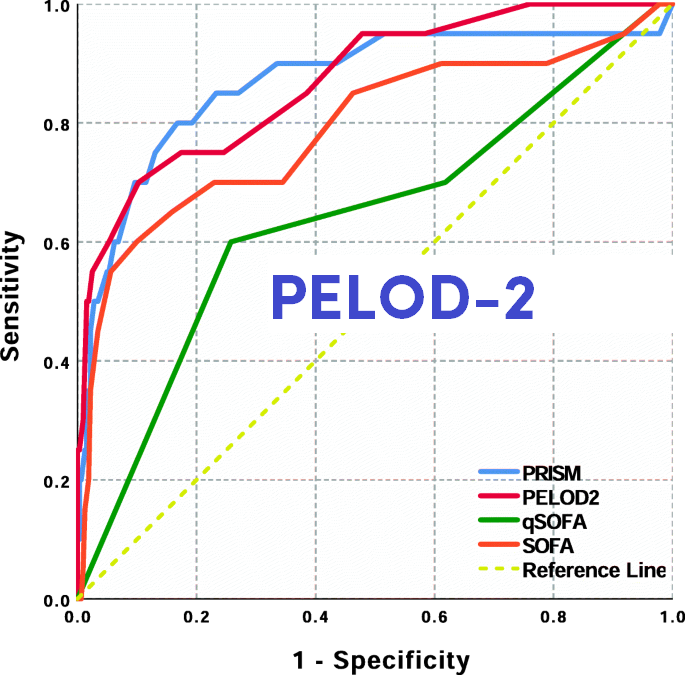Score PELOD-2, predictor de Mortalidad en Pacientes ingresados en la Unidad de Cuidados Intensivos en el Hospital Baca Ortiz desde Marzo hasta Agosto de 2018. Estudio Observacional/Pruebas diagnósticas
Contenido principal del artículo
Resumen
Introducción: El síndrome de disfunción multiorgánica (SDMO) es la falla de dos o más órganos en pacientes críticamente enfermos, por lo que se han creado puntajes que permiten estimar su mortalidad. El objetivo del presente estudio fue determinar el valor diagnóstico de la escala “Disfunción Pediátrica Logística de órganos-2” (PELOD-2) como predictor de mortalidad en los pacientes ingresados en la Unidad de Cuidados Intensivos (UCIP) en el Hospital Baca Ortiz.
Métodos: Este estudio observacional analítico fue realizado en la UCI del Hospital Pediátrico “Baca Ortiz”, Quito-Ecuador en Marzo a Agosto 2018. Se incluyeron todos los posibles casos analizables. Las variables edad gestacional, sexo, variables clínicas del puntaje PELOD-2 y mortalidad. El Grupo 1 (G1): niños con fallecimiento, Grupo 2 (G2): niños vivos. Se calculó Sensibilidad (S), Especificidad (E), Valor Predictivo Positivo (VPP), Valor Predictivo Negativo (VPN) de cada Puntaje.
Resultados: 188 casos fueron incluidos. Fueron 97 mujeres (51.6%). Pacientes de 1 a 4 años de edad 66/188 (35.1%) Con falla respiratoria 100 casos/188 (53.7%). Mortalidad de 35 casos/188 (18.6% IC 95% 18.21-19.02%). PELOD2 ≥16 mortalidad 63%. OR 511.7 (IC95% 29.4-8909) P<0.0001. S:62.9%, E:100%, VPP:100%, VPN:92.2%. Exactitud: 93.1%.
Conclusión: El puntaje PELOD-2 es un predictor de mortalidad aceptable, y altamente específico.
Descargas
Detalles del artículo

Esta obra está bajo una licencia internacional Creative Commons Atribución-NoComercial 4.0.

